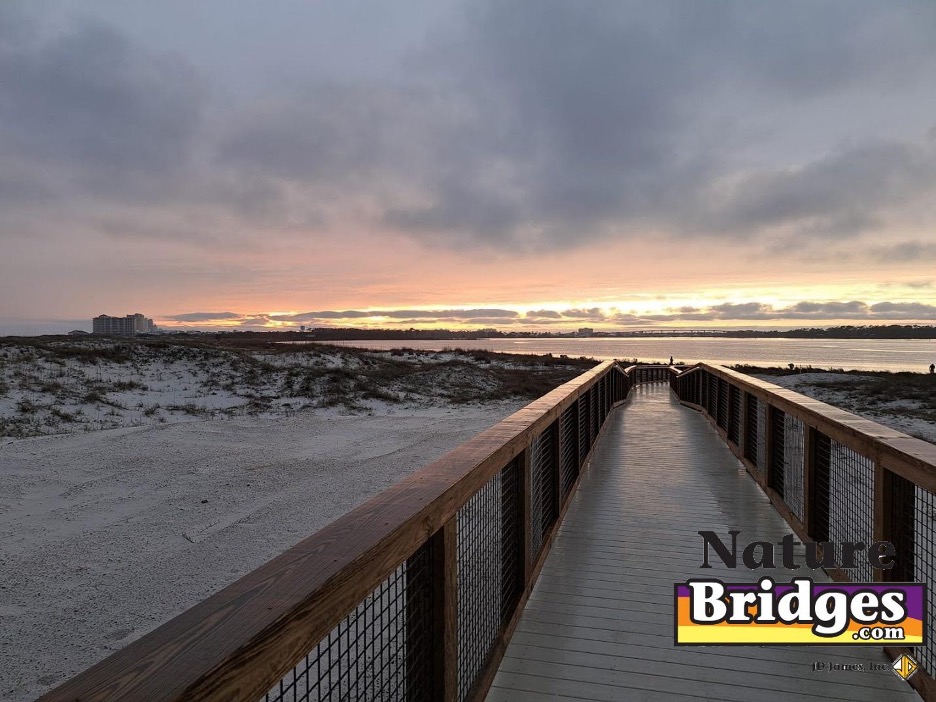
A dune crossover plays a crucial role in preserving the fragile ecosystem of the dune and beach. These walkways ensure our stroll to one of our favorite summer destinations does not erode or damage the dunes, which are natural barriers against coastal erosion that also provide habitats for many ecologically sensitive species.
The Importance of Dune Conservation
Dunes are protective buffers between the ocean and inland areas, absorbing the impact of storms and high waves and preventing coastal erosion. They also provide a unique habitat for a diverse range of plants and animals. The preservation of these fascinating formations is essential, and dunes are designed to minimize human impact. In Florida alone, an estimated 33 million tourists visit the ocean each year, and many of those beaches have dunes. By directing foot traffic over a walkway rather than directly through the dunes, we can help maintain the integrity of dune systems.
Designing Dune Crossovers
Dune crossover designers consider many factors, such as durability, environmental impact, and aesthetics, ensuring that the walkway complements the landscape. Materials used in dune crossover construction are typically resistant to salt water and air corrosion. Treated wood and composite materials are common choices that offer longevity and sustainability.
A dune crossover design should also integrate seamlessly with the landscape. A gentle, winding path discourages visitors from wandering off the path, which protects underlying vegetation. The height and width of the crossover should also be planned carefully. The structure needs to accommodate enough clearance to avoid damaging the dunes while providing safe, easy access for visitors.
Direct Contact

Depending on the area’s needs, a dune crossover may be built directly on the dune, integrating closely with the natural contour of the landscape. These paths are usually designed subtly, using materials that blend with the sand while minimizing disturbance. They are carefully laid out to protect the dune’s integrity, prevent erosion, and preserve the habitat. This type of crossover is essential in areas where maintaining the natural appearance and ecological balance of the dune is a priority.
Raised Walkways

Raised walkways are ideal for highly sensitive dune areas. They limit human contact with the dune system, preserving unique dune plants and preventing erosion. This type of crossover is typically built with supports deep enough that they don’t disturb the root system beneath the dunes.
Step-Down Access

The height of many dunes is variable. For these, the dune walkway designer can implement step-down access points. This type of crossover descends gradually and can be tailored to blend smoothly with the natural contours of the dune landscape. Designed correctly, it can be a stunning addition to the landscape as well as a practical solution.
Wheelchair-Accessible Crossovers

Dune crossovers can be a defensive tactic to protect the dune, but they also provide beach access to people. With that in mind, it’s important to ensure that everyone can enjoy the sand. Dune crossover ramps are designed with a gentle include and equipped with handrails and non-slip surfaces. These ramps comply with accessibility standards, making the ocean accessible to visitors with mobility challenges.
Construction companies who specialize in dune crossovers recognize the importance of designing a walkway that protects the delicate habitat while providing safe and enjoyable beach access. If you are considering a project to enhance your property with a dune, it’s essential to consult experts in environmentally sensitive construction. Contact Nature Bridges to learn how we can help you select and build the perfect dune crossover.


P.O. Box 516
Monticello, FL 32345
Office Closed: We will be closed for the holidays December 23-30, 2024
Phone: (850) 997-8585 Fax: (850) 385-3493
estimating@naturebridges.com